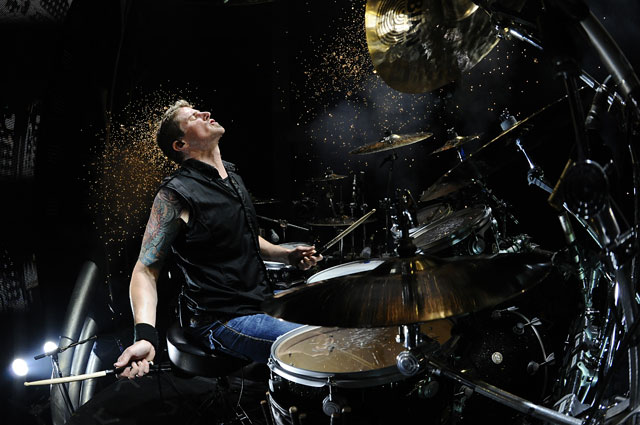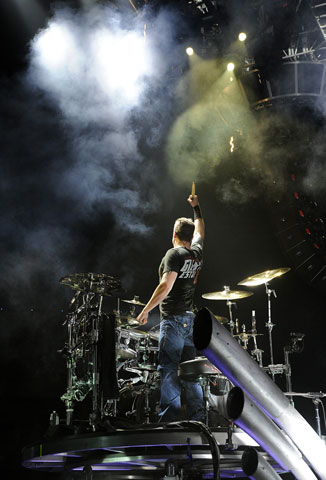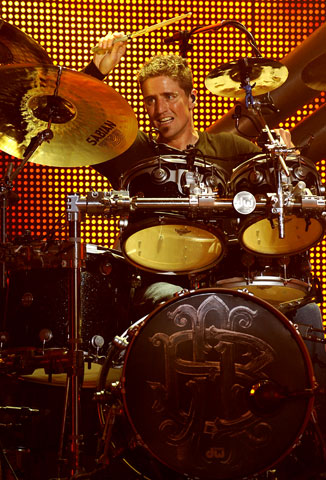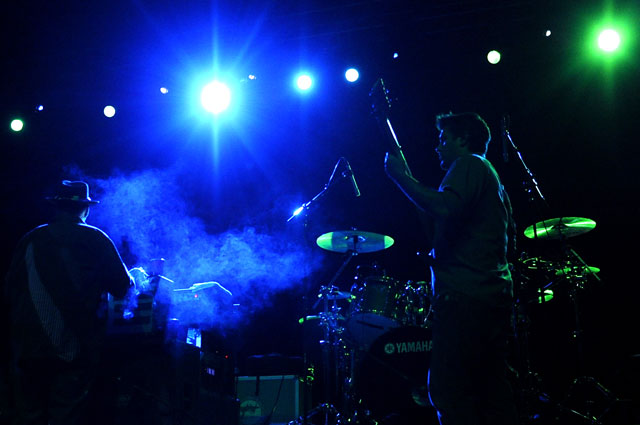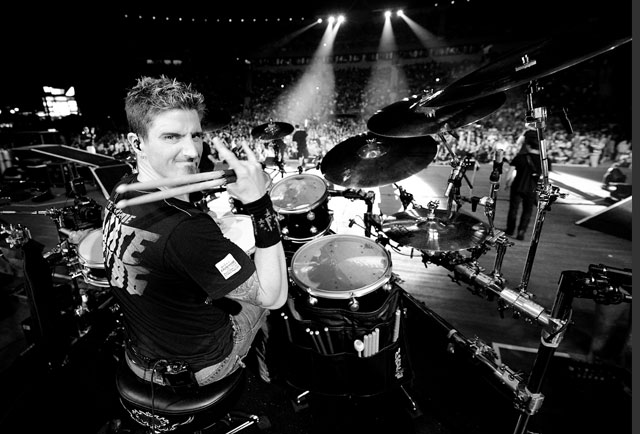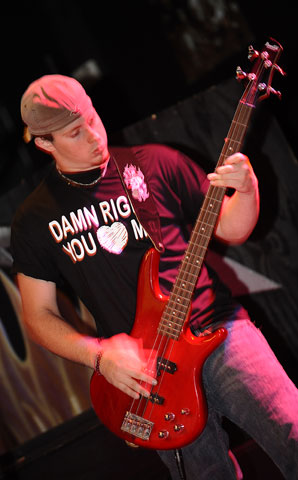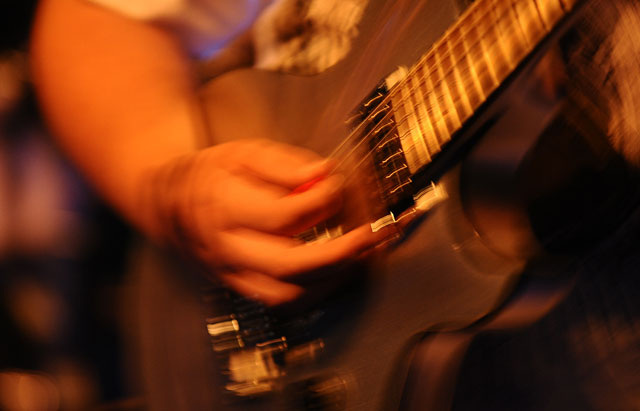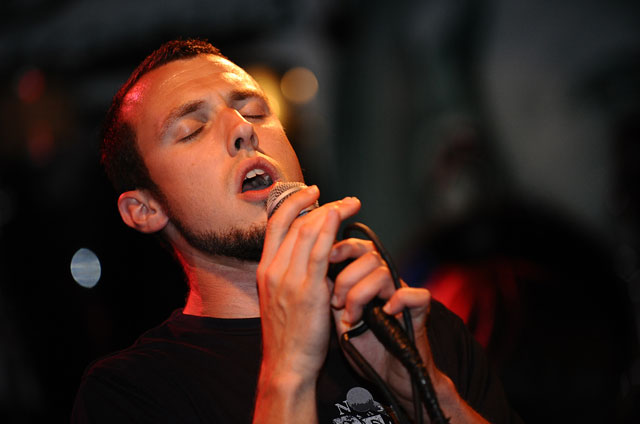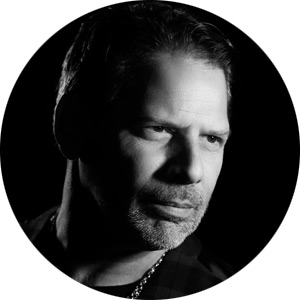Shooting a Rock Concert
Mike Corrado is NPS manager, product marketing at Nikon, but more important for our purposes, he's a skilled, inventive photographer with a passion for performance photography. Here's Mike's A-list of show-stopping shooting tips.
The most important thing, going in, is to know the rules. What will the venue, the band, the performer allow you to do? In other words, how much access will you have? Will you be limited to the pit in front of the stage? Will the band restrict you to shooting only during the first three songs? Will you be in the fifth row of the high-school auditorium with other parents? No venue wants the performance interrupted by a photographer running around; no performer wants the audience distracted. You're going to have to fit in, live with, and shoot with, the access you're given.
That said, there are ways to improve your chances. It's not likely you'll be granted the kind of access I had when I photographed the band Nickelback. Nikon worked out a special arrangement with them, and I turned that opportunity into some dramatic photos, including the first one here, a striking image captured by a remote camera set amid the drummer's kit. But take a look at the last five photos. That's my nephew's band, All Thee Above, and when they came to town to play a local club, I did exactly what you can do if your son or daughter is in a group or the neighborhood garage band finally makes it onto a local stage: I used my connections. The band welcomed the chance to get photos (they used several on their recent CD), and the club owners were cooperative, too. In a situation like that, sincerity, timing, the offer to provide some prints and a convincing showing of your best images can get you into the right positions for strong images.Typically, rock shots are only as good as the band's light show, as good as the drama of colors hitting the performers. White light, gelled light or light from the pyrotechnics will make or break your photos (for the most part, forget flash; few clubs, bands or performers will permit it).
How you deal with the light is the key to your performance photography, and the best way to deal is to know what's coming. If you're familiar with the band's stage show, you'll be ready when the lights kick in. If you're not, rely on anticipation, spontaneity, quick reflexes—and your gear. I shoot a lot with the D3, so I can go to ISO levels like 3200, even 6400, that'll grab images right out of the (almost) dark.
Speaking of gear, here's my rule of thumb: the worse the access, the longer the lenses. Even if I've been promised a spot close to or on the stage, I have a long-ranging telephoto lens handy (because people have been known to change their minds, or have their decisions changed for them). I typically carry a 70-200mm VR [AF-S VR Zoom-NIKKOR 70-200mm f/2.8G IF-ED]. It's got great reach and will isolate the musicians for close-ups and zoom in on details. If I've got great access, I look forward to going wider and getting more of the stage, other musicians, amps, mics and drums with a 14-24mm [AF-S NIKKOR 14-24mm f/2.8G ED] or a 24-70mm [AF-S NIKKOR 24-70mm f/2.8G ED].
Most of the time I set the camera for aperture priority and push the ISO; program mode just doesn't know how weird the lighting or quick the movements will be. I set spot metering and choose a flesh tone or a highlight area. With digital files, if the club or the room goes dark at the moment of exposure, chances are I can still get detail out of the darkness when I work on my images later on. I set my focus for continuous so I'm always tracking the performers' movements, and my camera is always set for continuous framing when the music is rock and roll. When the music isn't rock—for example, when I photograph my daughter playing the cello in a school recital—the pace is slower, and I set the camera for single exposures. And I always try to find out from my daughter where she'll be on stage so I know where I should be standing.
Which brings me to a final word about access: it improves with relationships. I've not only gotten to know band members, but I've also talked with the owners and managers of local clubs, the security guys at larger venues and the high-school orchestra teacher. Key phrases: I'd like to make a few more pictures from a different angle; I'd be happy to give you a CD of the performance photos; would you like some prints? For school performances you might ask your son or daughter to make the approach: "My dad's a really good photographer; check out his website and you'll see. Can you help him get access?" My attitude is simple: I respect what the performers do, I don't get in their way and I always play by the rules.
And that's our show folks. Mike has left the building.

